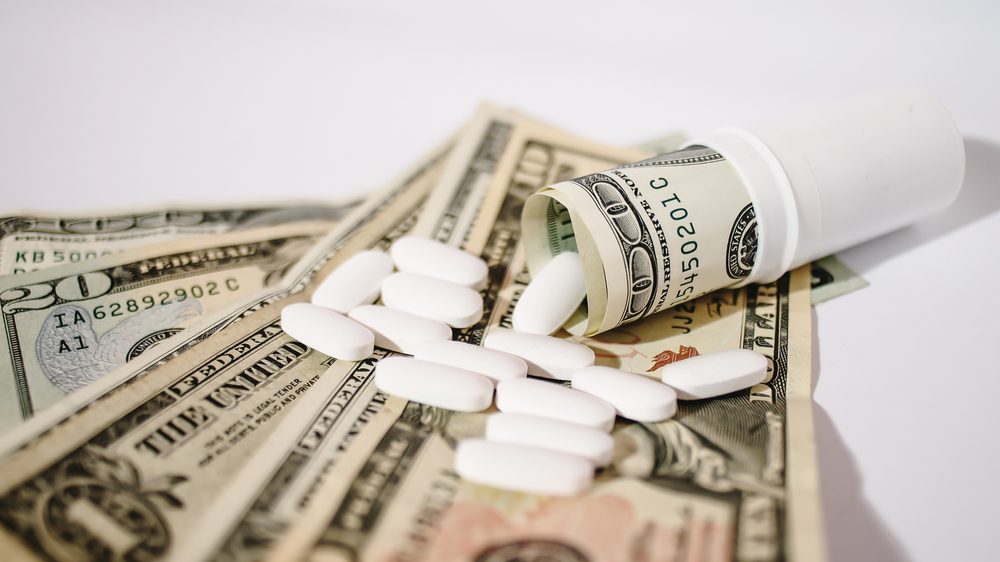Deep Dive Into Drug Prices

The high cost of prescription medications continues to afflict Americans. Despite an ongoing focus by the Trump administration — including recent executive orders containing potential changes — the government has not imposed significant regulations that have helped curb price growth.1
As a result, maintenance drug prices have increased out-of-pocket spending for about 30% of Americans throughout the past year. Among them, 12% report that their drug costs rose by $100 or more.2
Now that the drug industry has focused much of its attention and resources toward finding a vaccine or effective treatments for the coronavirus, the federal government may take a step back from impending legislation, at least during this election year. However, that doesn’t help those paying high drug prices in the here and now. One thing to consider when planning for retirement is how you will pay for possible increased health care expenses. Some insurance products provide various options you may want to consider. We’d be happy to discuss your options based on your unique situation.
While the government may not be focused on reducing drug prices, the health care industry has been deploying efforts with varying success. It’s important to recognize there are two different ways of measuring drug cost inflation. The first is the actual list price of prescription medications; the second is the actual patient cost. From 2007 to 2018, average list prices increased by about 159%, but the net price patients pay rose by only 60%. Not that that’s much consolation: it’s still much higher than the rate of inflation growth. But it’s worth taking a hard look at the difference between what is charged and what consumers pay, as well as who is absorbing that extra cost.3
The pharmaceutical industry has been working on its high-cost image problem by reducing the out-of-pocket cost for the end consumer, including offering discount cards, also referred to as drug coupons. While discount cards can significantly decrease the cost of medications, they’ve come under fire for encouraging patients to continue buying brand-name drugs when cheaper alternatives are available.4
Another concern with discount cards is that despite cheaper out-of-pocket patient costs, their health insurer gets stuck with the bigger bill. To mitigate this expense, some insurance plans have introduced a copay accumulator program, which basically disallows the value of a drug coupon toward the patient’s deductible or maximum out-of-pocket limit. This means the patient may save money at the drug store, but it will take longer to meet a deductible or out-of-pocket limits. Just recently, the Department of Health and Human Services finalized a rule that gives employer health plans the option to exclude all drug manufacturer coupons from participant cost-sharing.5
Another player in the drug market is the pharmacy benefit manager (PBM). This is a middleman administrator hired by health plans to negotiate prices with drug companies and manage drug claims. As part of the negotiation process, pharmaceutical companies offer PBMs rebates for adding a drug to their plan formularies. This is one way PBMs make money, and by paying these incentives, drug companies receive access to a wider network of patients. However, this practice does not exactly help the issue of rising drug prices for consumers.6
If we can be of any assistance, please contact us at 801-990-5050.

Our firm assists retirees and pre-retirees in the creation of retirement strategies utilizing investment and insurance products. Advisory services offered through B.O.S.S. Retirement Advisors, an SEC Registered Investment Advisory firm. Insurance products and services offered through B.O.S.S. Retirement Solutions.
1 Sidney Lupkin. NPR. July 24, 2020. “Trump Signs Executive Orders On Drug Prices.” https://www.npr.org/2020/07/24/895290378/trump-signs-executive-orders-on-drug-prices. Accessed July 28, 2020.
2 Lisa L. Gill. Consumer Reports. Nov. 26, 2019. “The Shocking Rise of Prescription Drug Prices.” https://www.consumerreports.org/drug-prices/the-shocking-rise-of-prescription-drug-prices/. Accessed July 28, 2020.
3 Jeff LaGasse. HealthcareFinance. March 4, 2020. “Drug prices rose three times faster than inflation over the last decade, even after discounts.” https://www.healthcarefinancenews.com/news/drug-prices-rose-three-times-faster-inflation-over-last-decade-even-after-discounts. Accessed July 28, 2020.
4 William G. Schiffbauer. Bloomberg Law. April 18, 2018. “Let’s Talk About Prescription Drug Copay Coupons: Do They Operate as Unregulated Secondary Insurance?” https://news.bloomberglaw.com/health-law-and-business/lets-talk-about-prescription-drug-copay-coupons-do-they-operate-as-unregulated-secondary-insurance. Accessed July 28, 2020.
5 Michelle Andres. BenefitsPro. July 6, 2020. “Federal rule will leave decision on copay assistance programs up to employers.” https://www.benefitspro.com/2020/07/06/federal-rule-will-leave-decision-on-copay-assistance-programs-up-to-employers/. Accessed July 28, 2020.
6 Lisa L. Gill. Consumer Reports. Nov. 26, 2019. “The Shocking Rise of Prescription Drug Prices.” https://www.consumerreports.org/drug-prices/the-shocking-rise-of-prescription-drug-prices/. Accessed July 28, 2020.
Ready to Take The Next Step?
For more information about any of the products and services listed here, schedule a meeting today or register to attend a seminar.
